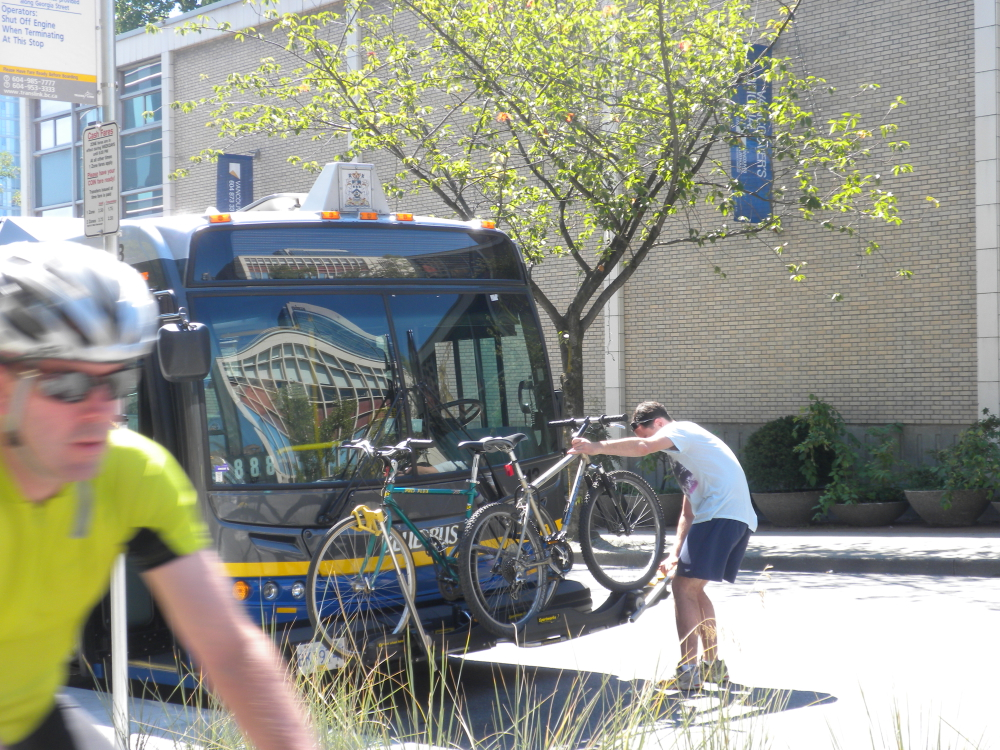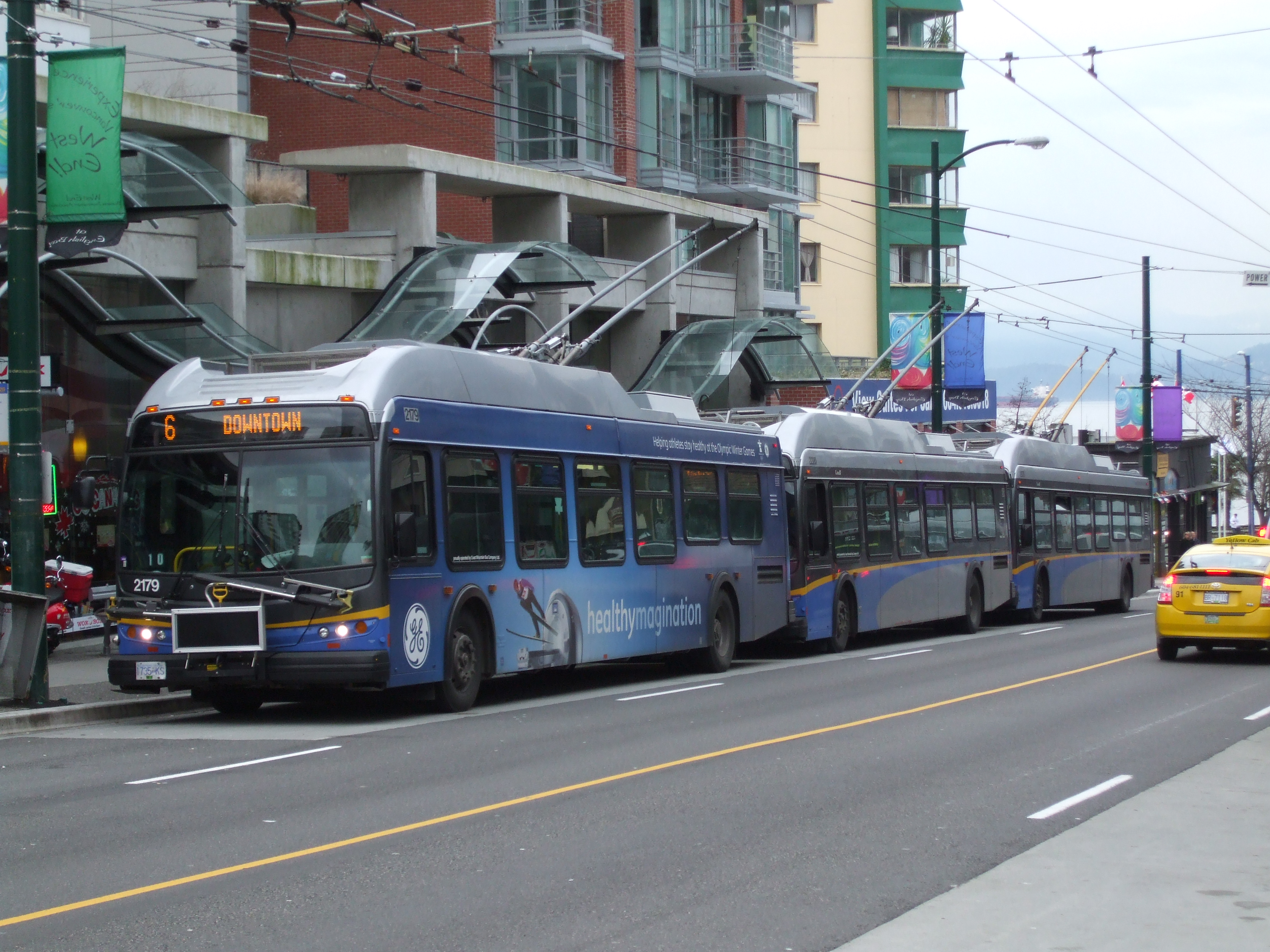
From the Business in Vancouver’s Glen Korstrom is preliminary evidence showing decreased use of private vehicles in Vancouver.
“Insurance Corp. of British Columbia (ICBC) data provided to Business in Vancouver showed that 270,000 passenger vehicles were registered in the city of Vancouver at the start of 2016. That’s 3.8% more than at the start of 2012, but Vancouver’s population during that same period rose 5.2% to 666,996, according to BC Stats.”
The annual City of Vancouver survey of 2,500 citizens conducted by CH2M and the Mustel Group had already identified this trend, showing that 50 per cent of trips were being made by walking, transit or cycling. That is an increase from 47 per cent in 2013. As well 26 per cent of driving aged citizens had access agreements to car share, an increase from 20 per cent in 2014.
“Simon Fraser University city program director Andy Yan is eager to see the results of the 2016 census, which asked about transportation modes. He expects that data to be released in November and be more reliable than the city’s survey, given the census’ large sample size.” While Vancouver is doing an admirable job, more work needs to be done across the metropolitan area to make transit a viable option for residents in the region.














Author
Reblogged this on Sandy James Planner.
If this is a trend, and by the evidence it’s shaping up to be significantly solid, then it may be possible to imagine dramatically reducing the amount of land devoted to asphalt in a decade or two. It will certainly be a quieter city by mid-century.
I hope car ownership rates go down, but I think we have to be careful with interpreting the stats. The rate of vehicle ownership has never been 1 person equals 1 car.
The grammar police note that the headline should read “fewer cars”.
I’d say the stats underestimate the change in Vancouver. The population rose 5.2%, but I’ll bet the population of kids and seniors rose slower or not at all meaning the number of adults without a car is growing even faster than those numbers suggest.
I doubt there’s a similar trend outside the CoV where auto-centric suburbia reigns supreme. Residential streets and driveways in Delta and Surrey are filled with parked cars, trucks, vans, etc. every time I visit. I know there are some large families, but at some houses it really looks like cars outnumber adult residents.
Yes, these kind of headlines sound great, but you can’t just look at Vancouver in isolation. We live in a region with people traveling all over the place between here and there.
Sure, downtown or even Vancouver proper might have fewer cars as a % overall, but how does the region look? Cause even if Vancouver magically cut car use by 50%, if the region doesn’t, well…doesn’t really sound as good.
This is good news but honestly it’s not good enough. Until the number of cars in Vancouver begins to actually drop, not just in relation to the population, then we’re still adding to the problem. There’s no space in this city for more cars just as there’s no room left in our climate plan for the emissions they produce. Really what this tells me is that much more needs to be done to make car-free living possible not just in the inner city but also in the inner suburbs and beyond, and also for parents with children, etc.
Cue TOD in suburban neighbourhoods with LRT or BRT service and superb short stop support bus service. Suburban malls on arterials outside of the SkyTrain-linked town centres seem ripe for a new surface transit and moderate density focus.
That downvote must be from a SkyTrain Lobbyist. 😉
The methodology of the survey shows 56% of respondents were over 55 years of age. Is this representative of the general Vancouver population?
I’m also suspicious of polling that offers the respondents *gifts* or *rewards* for keeping records of their daily movements.
This is pretty misleading. The absolute number of cars and trips is what matters.
The title should be something akin to “More cars, even more people.”
Once you factor in car sharing, this number also doesn’t sound that optimistic. Consider that a car share gets used quite a bit more intensely than an average personal vehicle.
According to a 2014 Metro study, there does seem to be a downward trend in VKT and car ownership when car share outfits appear in neighbourhoods, not the least communities already with access to rapid transit. There was also a reduction in VKM across the continent until oil prices plummeted, and several studies on this phenomenon indicated a direct correlation, up and down with gasoline prices, which are now creeping up again.
From the Metro study:
Key Findings:
Vehicle Holdings (Own/Lease): On average, up to three private personal vehicles were shed per car share vehicle. When the avoidance of acquiring private personal vehicles was included, each car share vehicle removed between 5 and 11 private personal vehicles from the use of current car share households. Unlike vehicle avoidance, not all vehicles that were shed would have been taken off the
road, as some would have been sold or transferred to other owners in the region or outside.
Vehicle Kilometres Travelled (VKT):
About one‐half of car share households with no vehicles prior to joining car share reported driving more after joining a program. In contrast, one‐third of car share households with vehicles prior to joining a car share program reported reductions in driving after joining. Over two‐thirds of car share households that shed one or more vehicles also reduced their VKT. Further investigation is needed to understand the magnitude of the net change in vehicle kilometres travelled and implications for air emissions and related issues.
http://www.metrovancouver.org/services/regional-planning/PlanningPublications/MetroVancouverCarShareStudyTechnicalReport.pdf
The key is net change. I would think per capita car ownership and VKT would be good levelling agents across the board.
How can we reconcile Vancouver’s downtown experience (less traffic) with the trends apparent throughout North America as described in a recent NY Times article. That article found that in the US nothing seemed to reduce the growth in traffic:
“This is because the average person prefers the privacy and convenience of riding in a car. Only when the drive is far enough or the traffic is bad enough — or a taxi costs enough — will more people choose to bike, car-pool, hop on a train or postpone a trip. This same pattern shows up in all kinds of places. You can see it in car-centric cities like Los Angeles and Houston, where yearslong, multibillion dollar lane-widening projects did little to speed commutes.
“But you can also see it in New York — by far the most transit-friendly city in the United States. Ride-hailing services like Lyft and Uber have led to increased auto traffic, according to a February study from Schaller Consulting in Brooklyn, while subway trips dipped slightly in 2016 because of a fall in weekend usage.”
What is going on here?
More at
https://www.nytimes.com/2017/03/08/upshot/self-driving-cars-cant-cure-traffic-but-economics-can.html